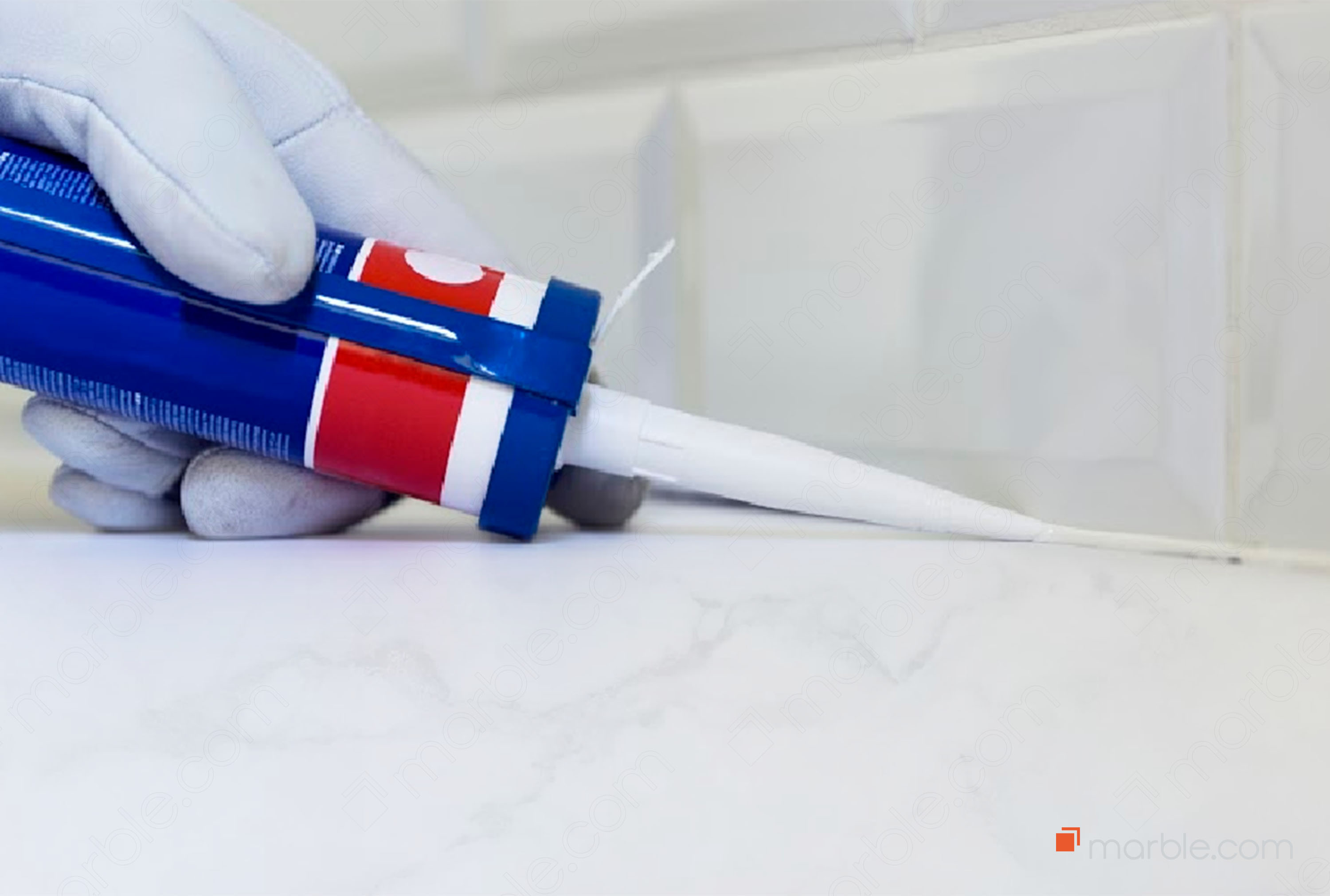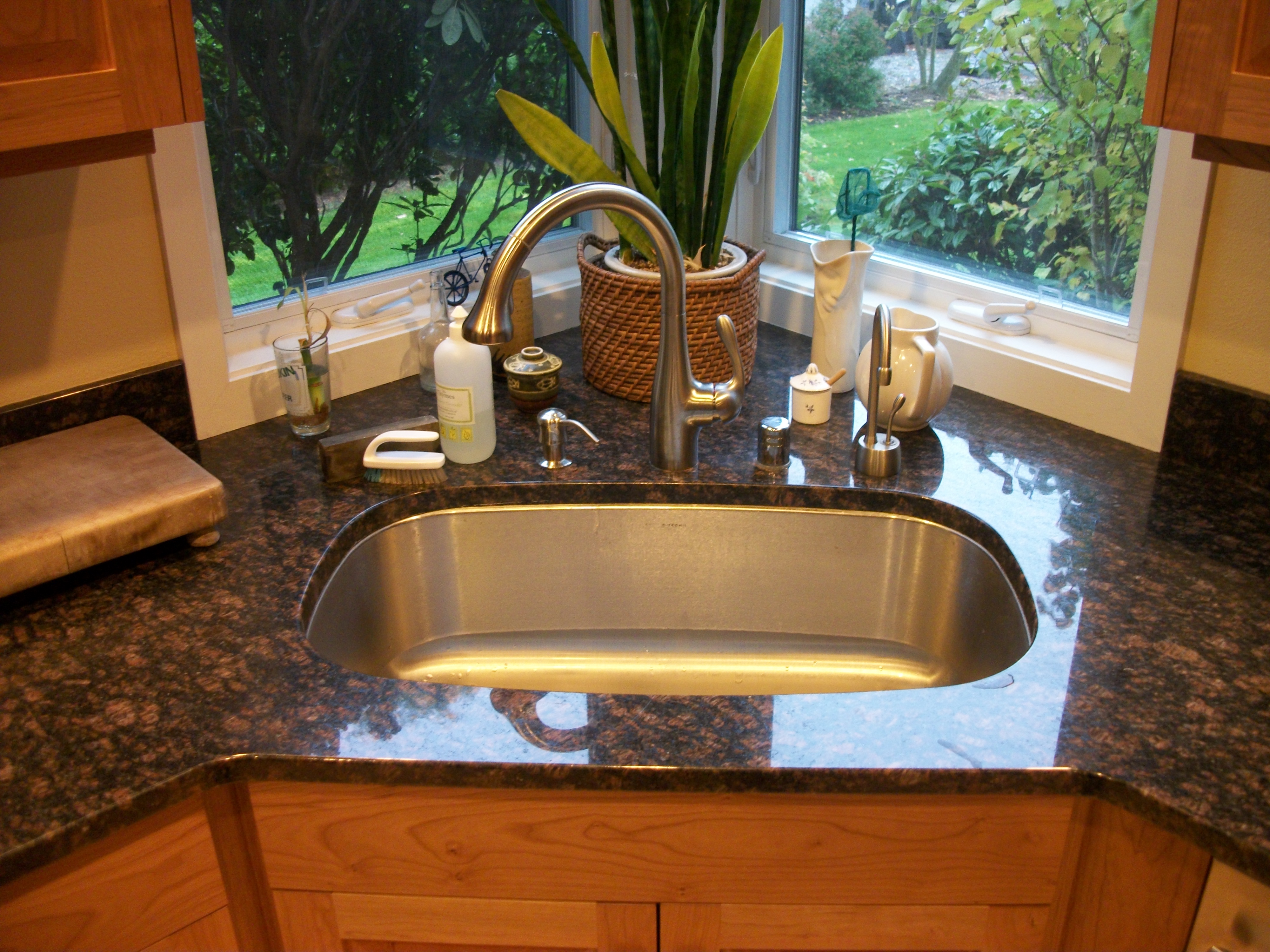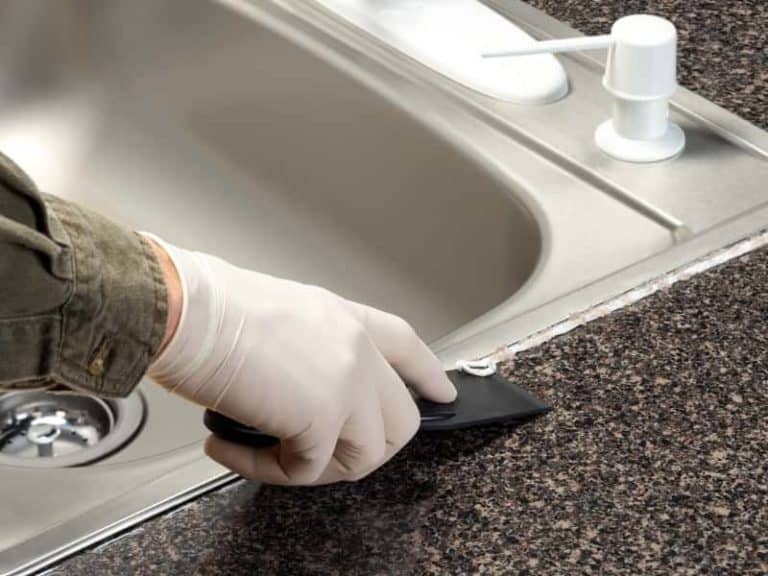If you're looking to give your kitchen a fresh, updated look, caulking your kitchen sink countertop is a simple and affordable way to do so. Not only does it improve the appearance of your countertop, but it also helps to prevent water damage and mold growth. Here's a step-by-step guide on how to caulk your kitchen sink countertop.How to Caulk a Kitchen Sink Countertop
When it comes to choosing the best caulk for your kitchen sink countertop, there are a few things to consider. Look for a caulk that is waterproof and specifically designed for kitchen and bathroom use. Silicone caulk is a popular choice as it is flexible, durable, and resistant to mold and mildew. Brands like GE and DAP offer high-quality silicone caulk that is perfect for kitchen sink countertops.Best Caulk for Kitchen Sink Countertop
Before you begin caulking, make sure to thoroughly clean and dry the area around your sink. Remove any old caulk and wipe down the surface with a mild cleaner. You can also use rubbing alcohol to ensure the area is completely clean and free of any residue. Additionally, using a caulk gun can make the application process much easier and more precise.Tips for Caulking a Kitchen Sink Countertop
Step 1: Start by cutting the tip of the caulk tube at a 45-degree angle. This will allow for a smoother and more precise application. Step 2: Load the caulk tube into the caulk gun and remove any air bubbles by squeezing out a small amount of caulk onto a scrap piece of paper or cardboard. Step 3: Begin by applying a thin bead of caulk along the edge of the sink where it meets the countertop. Use steady pressure on the trigger to ensure an even flow of caulk. Step 4: Once you have applied a bead of caulk along the entire edge, use your finger or a caulk smoothing tool to smooth out the caulk and create a neat, clean line. Step 5: Wipe away any excess caulk with a damp cloth and allow the caulk to dry completely before using your sink.Step-by-Step Guide for Caulking a Kitchen Sink Countertop
One of the most common mistakes when caulking a kitchen sink countertop is not properly preparing the surface. Failing to remove old caulk and thoroughly cleaning the area can result in an uneven application and a weaker seal. Additionally, using too much caulk can cause it to ooze out and create a messy appearance. Remember to use a steady hand and only apply a thin bead of caulk.Common Mistakes When Caulking a Kitchen Sink Countertop
It is recommended to caulk your kitchen sink countertop at least once a year, or as needed. Over time, caulk can shrink, crack, or become discolored, making it necessary to reapply. However, if you notice any water damage or mold growth, it is important to caulk the area immediately to prevent further damage.How Often Should You Caulk a Kitchen Sink Countertop
In addition to silicone caulk, there are other caulking products that are specifically designed for kitchen sink countertops. Flex Shot and Loctite offer sealant caulk that is not only waterproof but also resistant to stains and mildew. These products are perfect for high-traffic areas like kitchen sink countertops.Top Caulking Products for Kitchen Sink Countertops
If you need to remove old caulk before applying a new one, there are a few methods you can try. You can use a caulk removal tool, a razor blade, or even a hairdryer to soften and scrape away the old caulk. Make sure to thoroughly clean and dry the area before applying new caulk.How to Remove Old Caulk from a Kitchen Sink Countertop
Caulking a kitchen sink countertop is a simple task that can easily be done on your own. However, if you are not confident in your DIY skills or do not have the necessary tools, it may be best to hire a professional. Hiring a professional can ensure a precise and long-lasting seal, saving you time and potential frustration.DIY Caulking vs. Hiring a Professional for Kitchen Sink Countertop
Aside from improving the appearance of your kitchen, caulking your sink countertop also helps to prevent water damage and mold growth. It creates a tight seal between the sink and the countertop, preventing water from seeping in and causing damage. Additionally, caulk helps to fill in any gaps or cracks, creating a smoother and more hygienic surface. In conclusion, caulking your kitchen sink countertop is a simple and cost-effective way to update your kitchen and protect your home from potential water damage. With the right tools and techniques, you can easily achieve a professional-looking seal that will last for years to come.Benefits of Caulking a Kitchen Sink Countertop
The Importance of Caulking Your Kitchen Sink Countertop

Ensuring a Proper Seal for Your Kitchen Design
 When it comes to designing your dream kitchen, every little detail matters. From the layout and color scheme to the appliances and fixtures, everything needs to be carefully considered to create a beautiful and functional space. One often overlooked aspect of kitchen design is the
kitchen sink countertop
. While it may seem like a minor detail, the
caulking
around your kitchen sink countertop plays a crucial role in the overall look and functionality of your kitchen.
Caulking
is a waterproof sealant that is used to fill gaps and cracks in various surfaces. In the case of a kitchen sink countertop,
caulking
is used to create a watertight seal between the countertop and the sink. This is essential in preventing water from seeping into the gaps and causing damage to your cabinets and flooring. Additionally, it helps to keep your kitchen clean and hygienic by preventing water and food particles from getting trapped in the gaps.
Properly
caulking
your kitchen sink countertop also helps to maintain the structural integrity of your kitchen. Water damage can cause the wooden structure beneath your countertop to rot and weaken, which can lead to costly repairs. By creating a tight seal,
caulking
helps to prevent water from seeping in and causing this type of damage.
Aside from its practical benefits,
caulking
also plays a crucial role in the aesthetic appeal of your kitchen. A poorly
caulked
kitchen sink countertop can be an eyesore, with visible gaps and uneven lines. On the other hand, a well-
caulked
countertop adds a clean and seamless finish, giving your kitchen a polished and professional look.
When it comes to
caulking
your kitchen sink countertop, it is essential to use the right materials and techniques. Silicone caulk is the most popular choice for this task as it is waterproof and flexible, allowing for movement between the countertop and sink. It is also important to ensure that the area is clean and dry before applying the
caulk
to ensure a proper seal.
In conclusion, while
caulking
your kitchen sink countertop may seem like a small and insignificant task, it plays a crucial role in the overall design and functionality of your kitchen. By creating a watertight seal,
caulking
helps to prevent damage, maintain the structural integrity of your kitchen, and add a polished finish to your space. So, the next time you are planning to
caulk
your kitchen sink countertop, make sure to do it properly and with the right materials to reap all its benefits.
When it comes to designing your dream kitchen, every little detail matters. From the layout and color scheme to the appliances and fixtures, everything needs to be carefully considered to create a beautiful and functional space. One often overlooked aspect of kitchen design is the
kitchen sink countertop
. While it may seem like a minor detail, the
caulking
around your kitchen sink countertop plays a crucial role in the overall look and functionality of your kitchen.
Caulking
is a waterproof sealant that is used to fill gaps and cracks in various surfaces. In the case of a kitchen sink countertop,
caulking
is used to create a watertight seal between the countertop and the sink. This is essential in preventing water from seeping into the gaps and causing damage to your cabinets and flooring. Additionally, it helps to keep your kitchen clean and hygienic by preventing water and food particles from getting trapped in the gaps.
Properly
caulking
your kitchen sink countertop also helps to maintain the structural integrity of your kitchen. Water damage can cause the wooden structure beneath your countertop to rot and weaken, which can lead to costly repairs. By creating a tight seal,
caulking
helps to prevent water from seeping in and causing this type of damage.
Aside from its practical benefits,
caulking
also plays a crucial role in the aesthetic appeal of your kitchen. A poorly
caulked
kitchen sink countertop can be an eyesore, with visible gaps and uneven lines. On the other hand, a well-
caulked
countertop adds a clean and seamless finish, giving your kitchen a polished and professional look.
When it comes to
caulking
your kitchen sink countertop, it is essential to use the right materials and techniques. Silicone caulk is the most popular choice for this task as it is waterproof and flexible, allowing for movement between the countertop and sink. It is also important to ensure that the area is clean and dry before applying the
caulk
to ensure a proper seal.
In conclusion, while
caulking
your kitchen sink countertop may seem like a small and insignificant task, it plays a crucial role in the overall design and functionality of your kitchen. By creating a watertight seal,
caulking
helps to prevent damage, maintain the structural integrity of your kitchen, and add a polished finish to your space. So, the next time you are planning to
caulk
your kitchen sink countertop, make sure to do it properly and with the right materials to reap all its benefits.































































:max_bytes(150000):strip_icc()/how-to-remove-old-caulk-1824827-01-3d0370c59e124dbbaa6560c68bab111c.jpg)
























